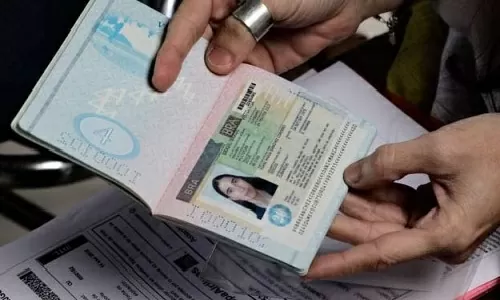
Canada has dealt a major blow to foreign students by deciding to immediately end its popular Student Direct Stream (SDS) program. According to the notification from Immigration, Refugees and Citizenship Canada (IRCC), the decision is aimed at “providing equal and fair opportunities for all students in the application process. “And also to provide a positive educational environment.” Following the closure of this Student Direct Stream (SDS) programme, all study permit applications will now be submitted under the normal process.
What was this program, why is it a blow to foreign students wanting to study in Canada and what impact will it have on Indian students? Let us understand…
What is Student Direct Stream Program
The Student Direct Stream (SDS) program was launched in 2018 by Immigration, Refugees and Citizenship Canada (IRCC) with the aim of streamlining the visa application process for students from 14 countries who meet certain criteria. These included China, India, Brazil, China, Colombia, Costa Rica, Morocco, Pakistan, Peru, Vietnam and the Philippines. Under this program, if students from these 14 countries met the language requirements and financial requirements and had a letter of acceptance from a Canadian college or university, their visa examination was simplified. According to an HT report, the approval rate for applications submitted under the SDS program was 95 percent and visa processing took only four weeks, half the time required for a regular study permit.
Under this scheme, if the applicant submitted biometrics and fulfilled all the eligible conditions, the application was processed within 20 days.
Why did Canada close the SDS program?
The biggest reason for canceling SDS is to limit the number of foreign students. For the past few years, Canada has been trying to control the number of foreign students in view of the lack of resources and accommodation. In the amendment made to the policy this year, the government has put a cap on the number of foreign students for 2025. A total of 437,000 permits are targeted, covering all types of studies and courses. Which also includes postgraduate degrees. Apart from this, some additional strict rules have also been made. Such as strict academic and language criteria for Post-Graduation Work Permit (PGWP), fewer work permits for spouses of international students, etc. Last year, i.e. in 2023, there were a record 807,000 study visa holders.
What effect will this have on foreign students?
With the closure of the Student Direct Stream (SDS) scheme, the dream of foreign students to study in Canada may be shattered. Now the visa process will become longer. Probably the visa will not be easily obtained. Apart from this, the number of students has also been limited. In such a situation, competition will increase further.
What will be the impact on Indian students?
Since Indian students were also included in the SDS program, they now have to go through longer visa processes. In recent years, the SDS program has emerged as a great help for Indian students seeking study permits in Canada. In 2022, 80 percent of Indian candidates used the SDS scheme, a significant increase from previous years. Between January and March 2023, nearly four out of five Indian students applied through SDS. Another thing to note is that the acceptance rate for SDS applicants was 76 percent while only 8 percent of students who applied through the normal channel got permits.
SDS proved to be a boon for Indian students during the pandemic. The acceptance rate of SDS applications in 2021 and 2022 was three times higher than that of non-SDS applicants (63 percent by the end of 2022, compared to 19 percent for non-SDS applicants). This continued till 2023. In 2023, the acceptance rate for SDS applicants reached 73 percent, while the acceptance rate for non-SDS applicants was 10 percent. In such a situation, it will now be a difficult task for Indian students to get a Canadian study permit or study visa.
Multi-visa entry also ended
According to the new rules, now the immigration officer will be able to decide whether the visa should be given for single entry or multiple entry and what should be its period of validity. Various factors may be considered while issuing visas such as purpose of visit, profession, financial stability, health of the visitor and others. Apart from this, now the matter of which country the applicant is a citizen will also be strictly considered. Earlier multiple-entry visas allowed the holder to enter Canada from any country during the validity period of the visa. Its maximum validity is up to 10 years or till the expiry of the travel document or biometrics. Overall, closure of Student Direct Stream (SDS) and abolition of multiple visa entry is going to increase the problems of Indian students or citizens.
 look news india
look news india